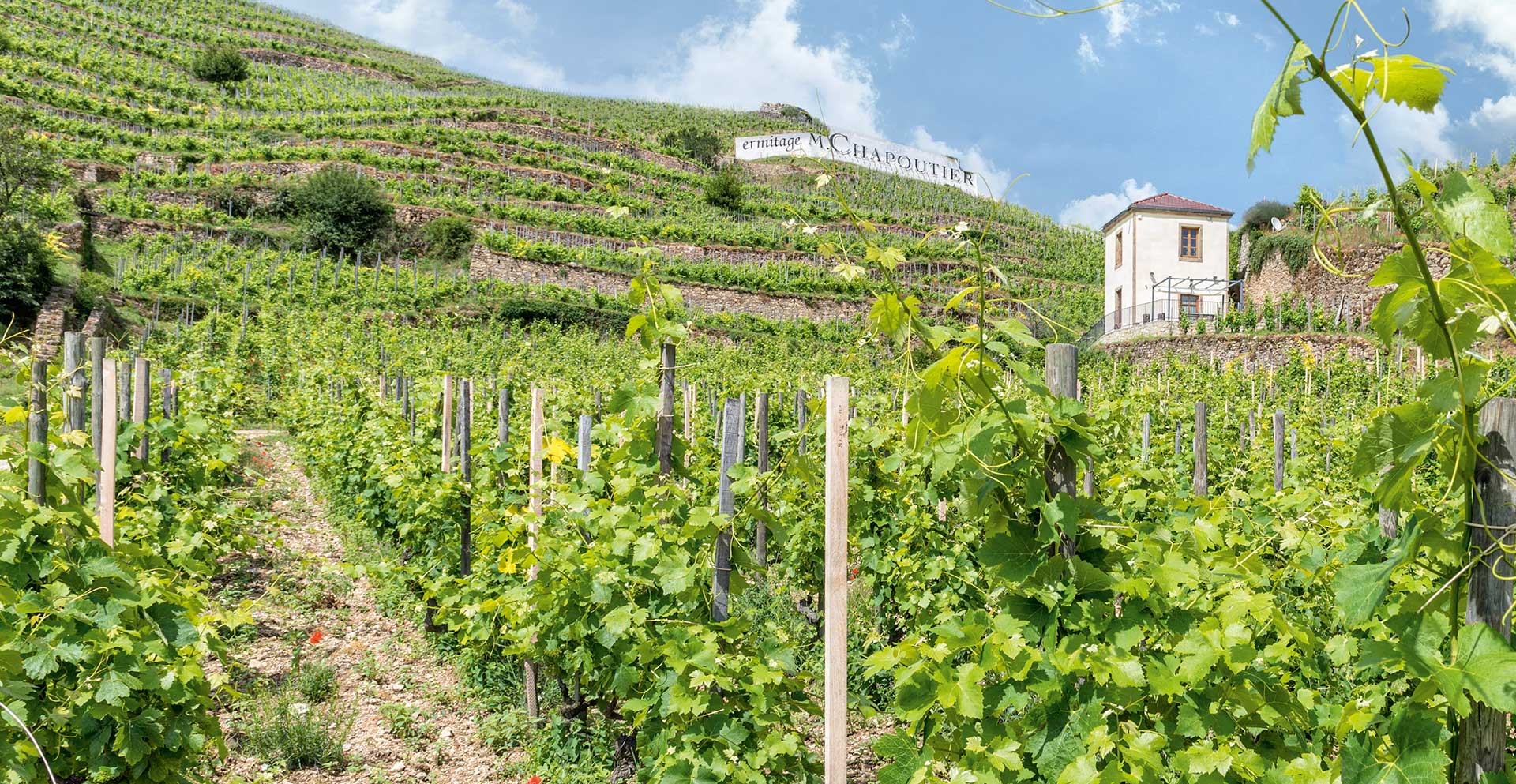Bila-Haut: a solar land
In the vineyard
03 June 2024

In the early noughties, Michel Chapoutier discovered the Roussillon vineyards and a new estate, Bila-Haut, was born. The climate is sometimes difficult, often harsh, and the terrain not at all friendly to winegrowers. In spite of all that, great wines were come out of those vineyards.
Situated between Latour de France and Banyuls-sur-Mer, Domaine de Bila-Haut covers around 250 acres. Hermitage Hill is miles away, and here everything is different, everything is diverse: soils, exposure, altitudes, microclimates... Indeed, it was this diversity that attracted Michel Chapoutier in the first place.
The climate here is typically Mediterranean, hot in summer and mild in winter. Facing the sea, the region is regularly swept by the Tramontane, a dry northerly wind, a useful weapon against fungal diseases.
Rich, varied soils
The different eras have created a unique landscape that has shaped the uplift of the Pyrenees, between mountainous areas and granite ridges. Vineyards, present in the region since the 5th century BC, thrive on soils that are generally dry and stony, but well drained.
The estate ranges between 200 and 400 meters above sea level, so some areas present major access issues. Around ten people are on hand to look after them all year around, assisted by seasonal workers at harvest time. On the steep slopes, hand-harvesting is the only option available...
But the real treasure of Bila-Haut is its soil composition, which is so diverse. On one plot, blakc and brown schists add a touch of sunshine to the wine. On another, gneiss, bringing cool minerality. You will also come across a combinaison of clay and limestone, which offers strength and balance: an ideal patchwork of soils for wines of character.
Vinification on the Bila-Haut estate is carried out in the traditional way, with maceration lasting up to 5 weeks and a proper maturing phase in wood or concrete vats. The Sélection Parcellaire v.i.t is even matured in terracotta barrels.
One of them is r.i., in the commune of Lesquerde. It comes from the Fount del Bessou plot, cultivated biodynamically, and facing due south. The vines here are "goblet" pruned, a short pruning method that keeps them close to the ground and protects them in strong winds. Successive tyings provide welcome shade for the grapes on hot days. And the region's characteristic cool nights lends the wine a well-balanced solar power.
This is a concentrated, powerful wine with spicy notes evoking the surrounding garrigue and aromatic plants of the south.


